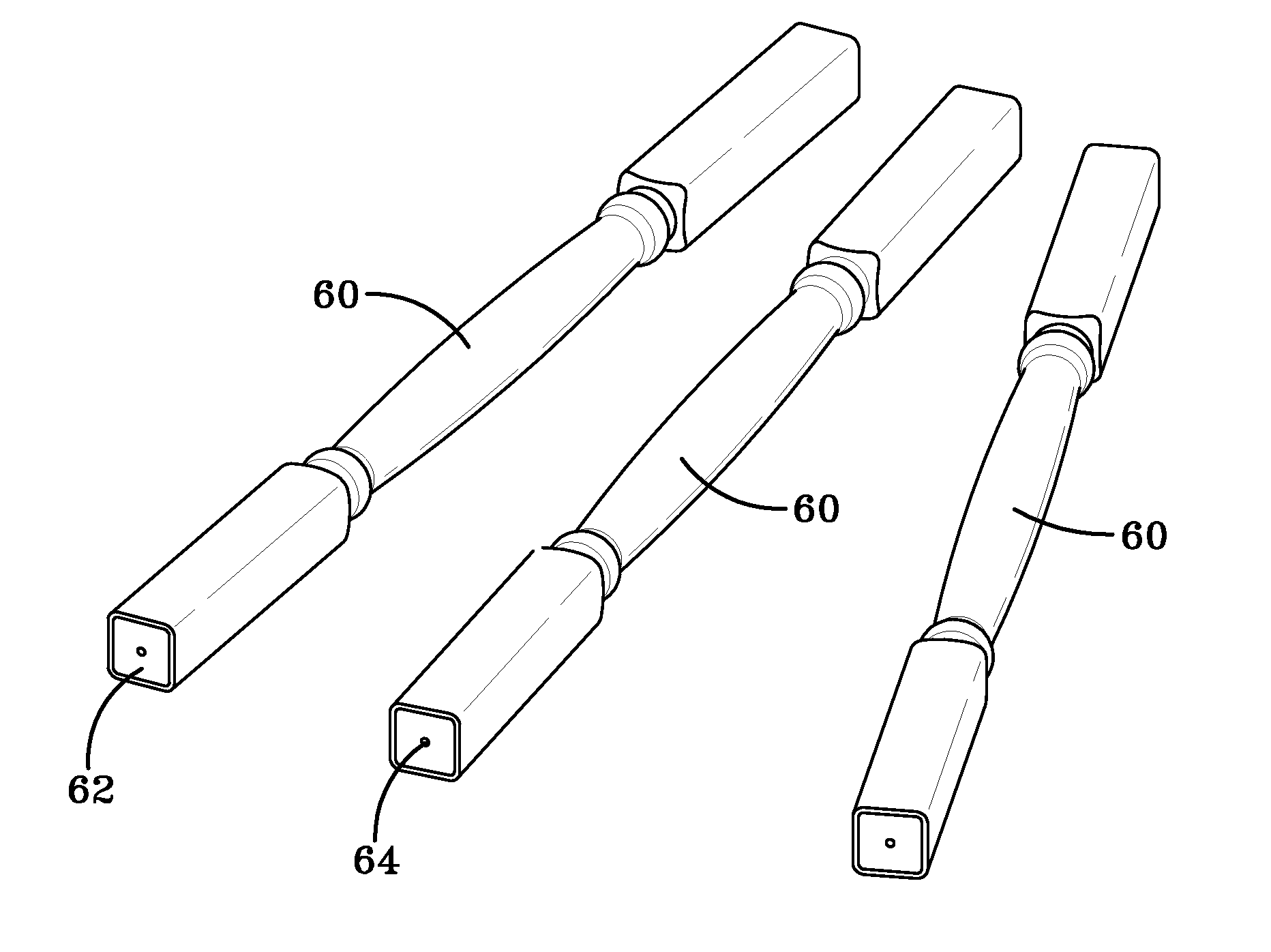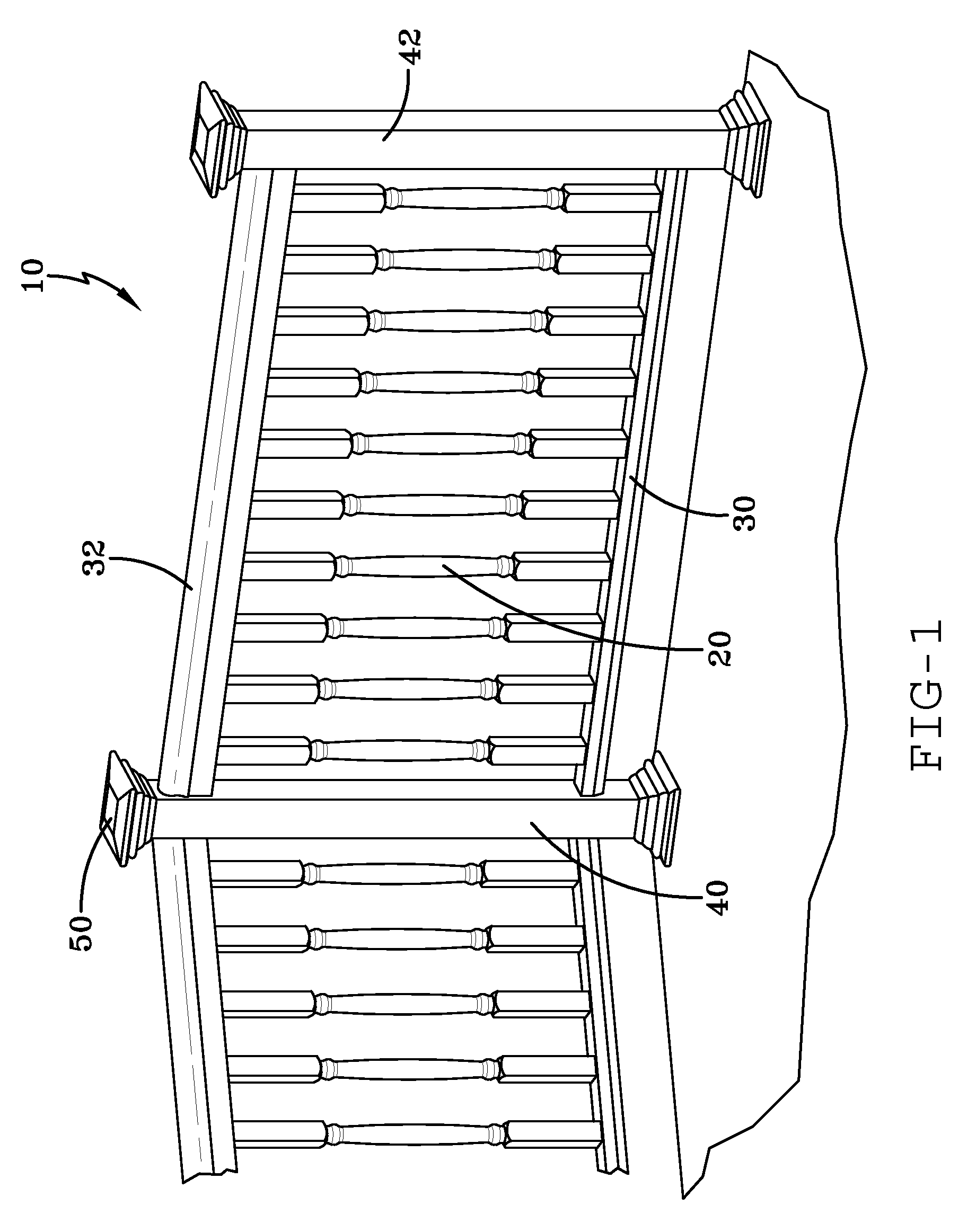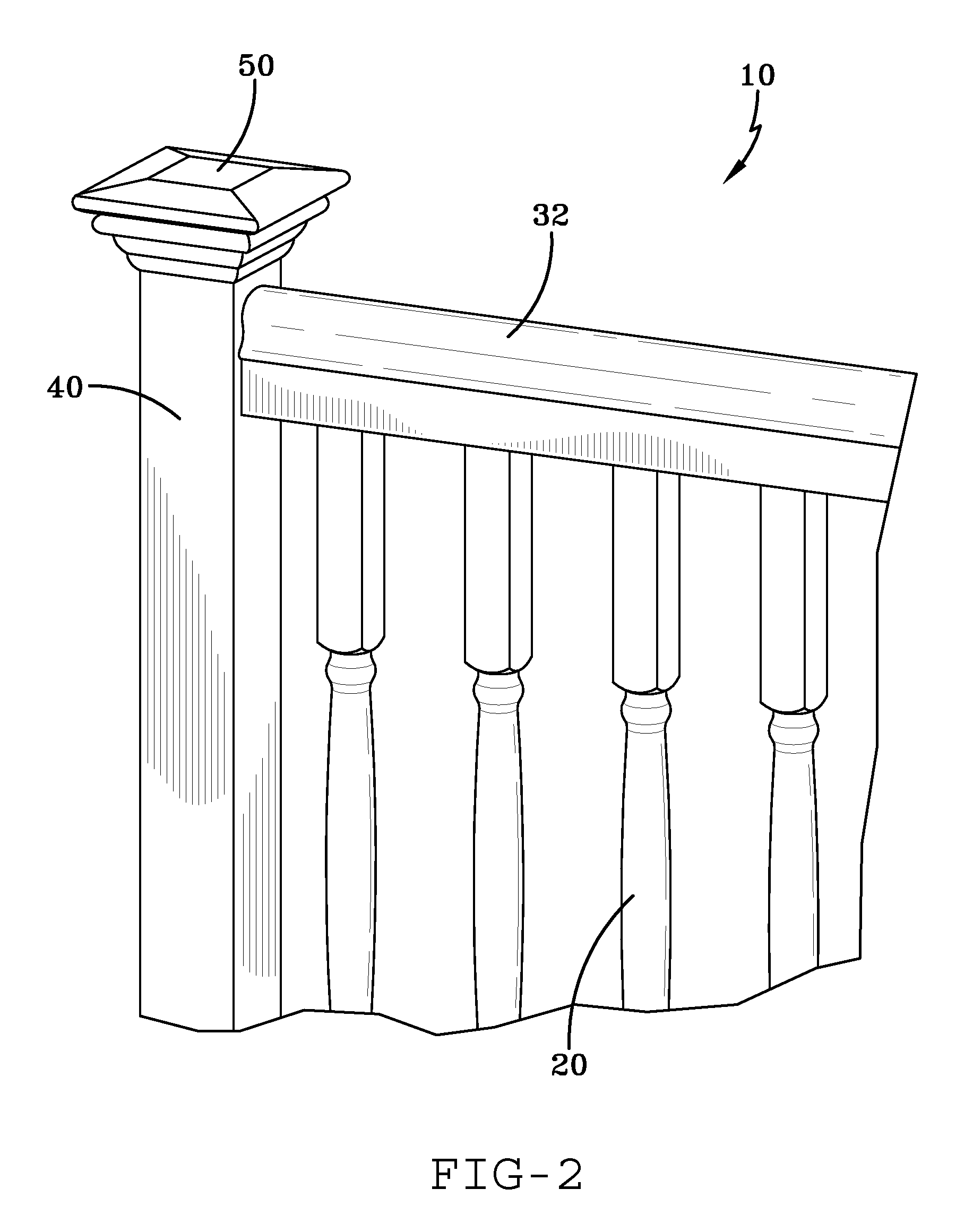Fiberglass/cellulosic composite and method for molding
a technology of fiberglass and cellulosic filler, which is applied in the direction of building components, construction, building construction, etc., can solve the problems of defect during the product molding process, increase the cost of manufacturing products using natural wood, and increase the cost of using natural wood to achieve the effect of improving processing and improving properties
- Summary
- Abstract
- Description
- Claims
- Application Information
AI Technical Summary
Benefits of technology
Problems solved by technology
Method used
Image
Examples
Embodiment Construction
)
[0018]Exemplary embodiments of the present invention are directed to a cellulosic-reinforced plastic composite suitable for producing products most traditionally manufactured from natural wood, and to products previously not generally suitable for manufacture from a wood material. Exemplary embodiments of the present invention also recite numerous methods for producing articles from such a cellulosic-reinforced plastic composite, as well as a variety of such articles that may be suitably produced.
Plastic Component
[0019]An exemplary embodiment of the reinforced composite material of the present invention is comprised partially of a plastic resin. The plastic resin may be of a thermoplastic variety such as multi-layer films; high-density polyethylene (HDPE); low-density polyethylene (LDPE); polyvinyl chloride (PVC); chlorinated polyvinyl chloride (CPVC); semi-rigid polyvinyl chloride (S-RPVC); polypropylene (PP); ethyl-vinyl acetate (EVA); acrylonitrile butadiene styrene (ABS); polys...
PUM
| Property | Measurement | Unit |
|---|---|---|
| Young's modulus | aaaaa | aaaaa |
| Young's modulus | aaaaa | aaaaa |
| weight | aaaaa | aaaaa |
Abstract
Description
Claims
Application Information
 Login to View More
Login to View More - R&D
- Intellectual Property
- Life Sciences
- Materials
- Tech Scout
- Unparalleled Data Quality
- Higher Quality Content
- 60% Fewer Hallucinations
Browse by: Latest US Patents, China's latest patents, Technical Efficacy Thesaurus, Application Domain, Technology Topic, Popular Technical Reports.
© 2025 PatSnap. All rights reserved.Legal|Privacy policy|Modern Slavery Act Transparency Statement|Sitemap|About US| Contact US: help@patsnap.com



